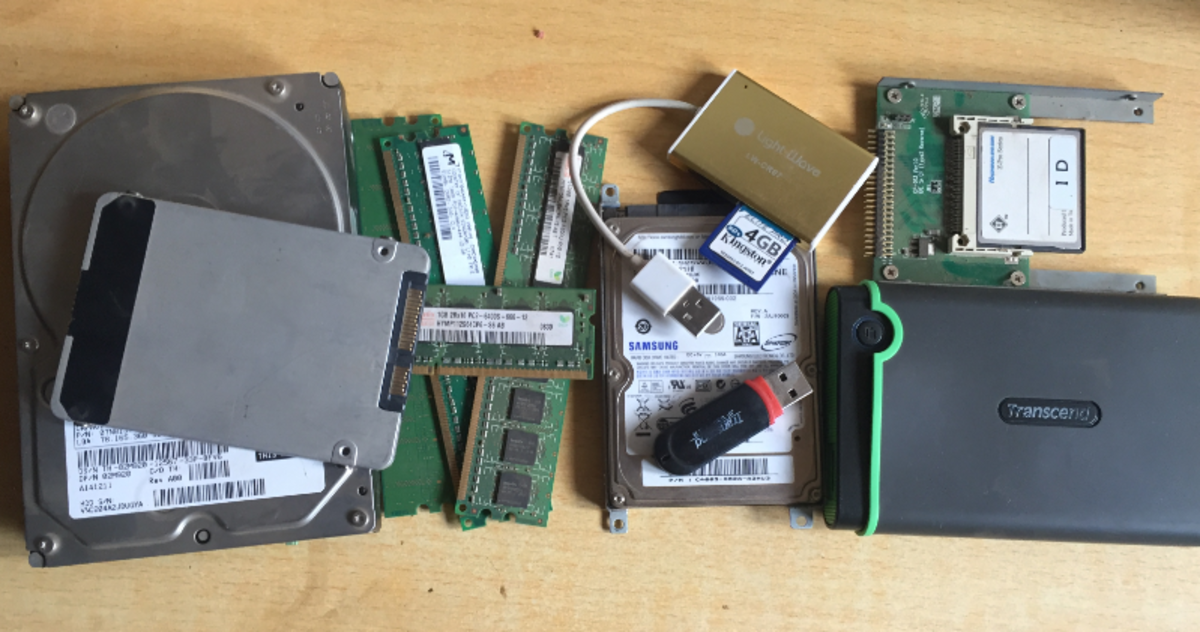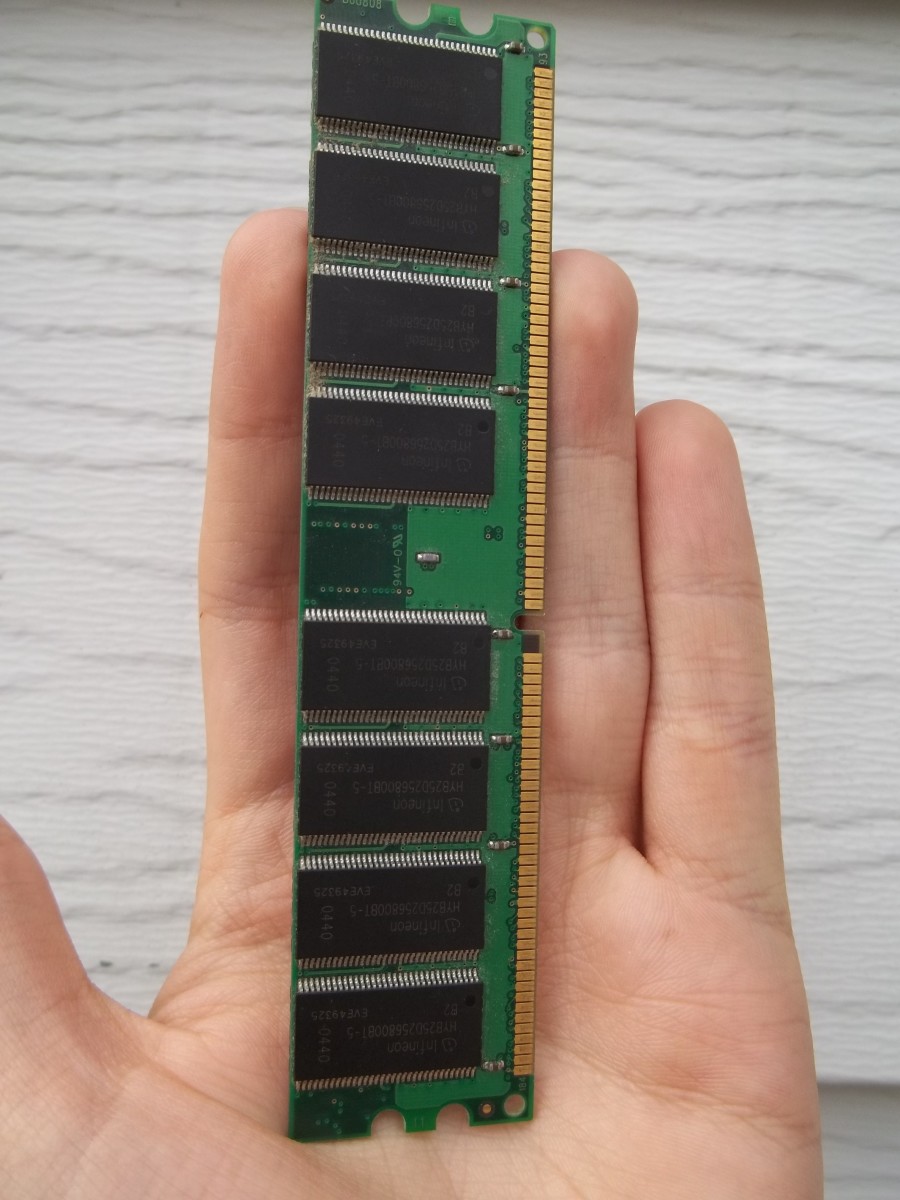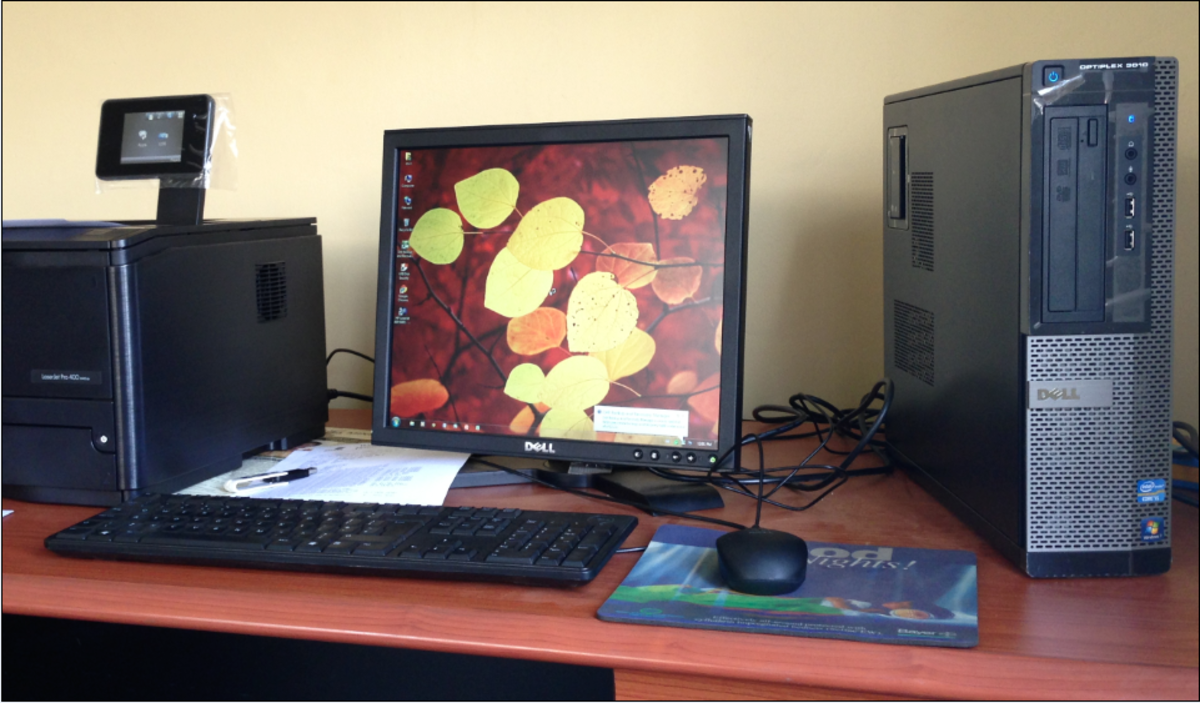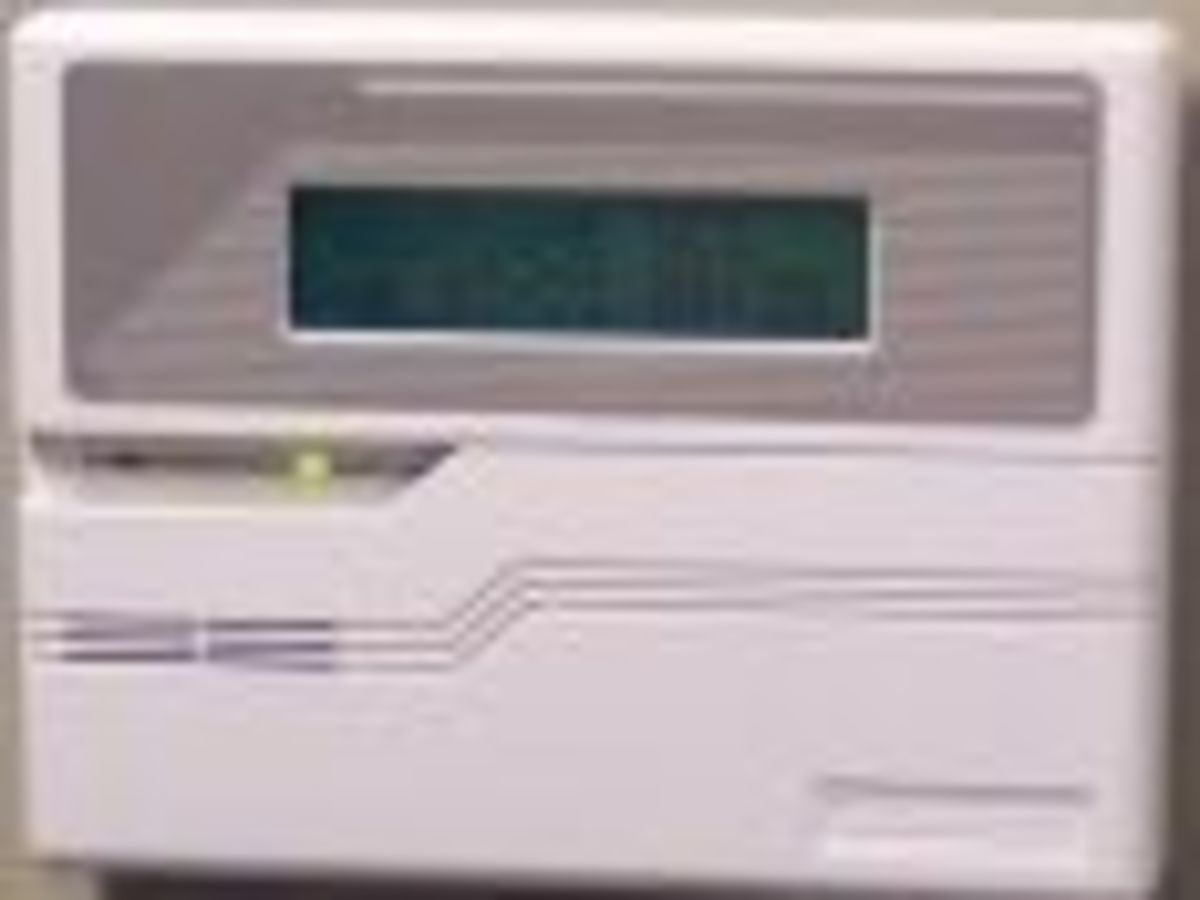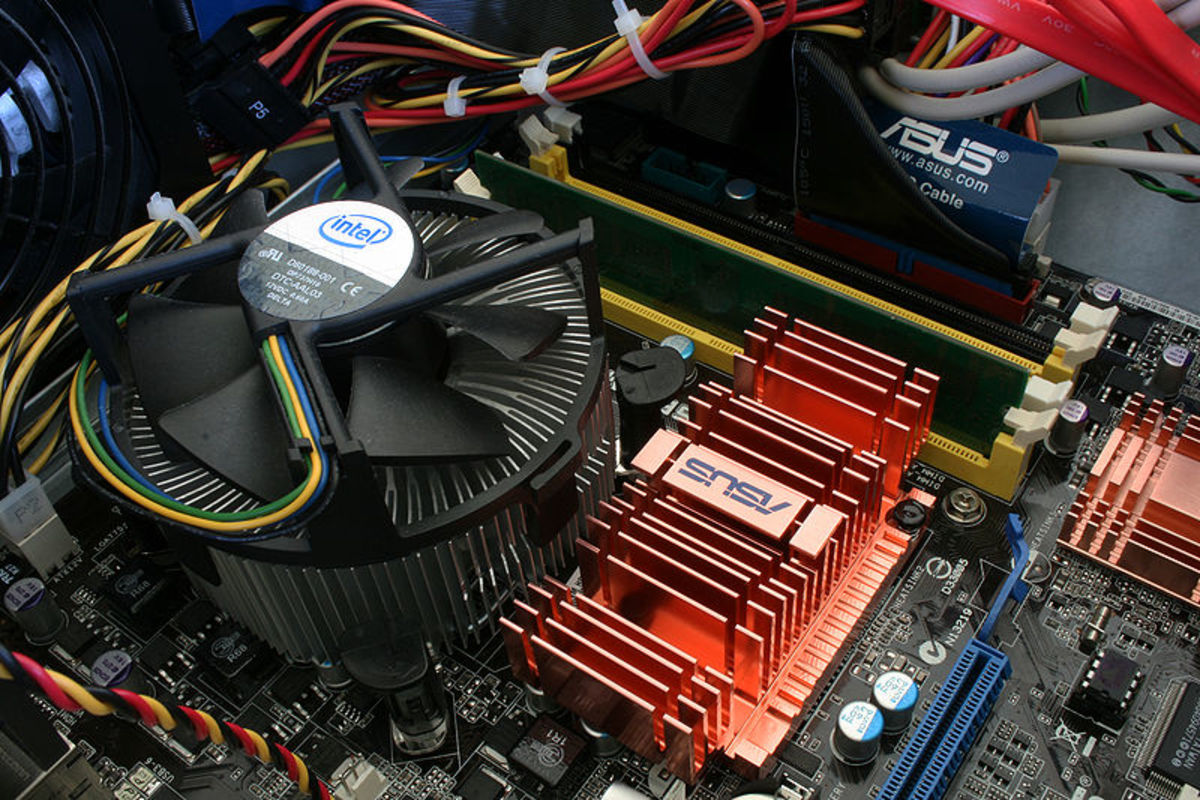- HubPages»
- Technology»
- Computers & Software»
- Computer Hardware
Computer Memory, SRAM and DRAM
Random Access Memory
Computers have become such a fundamental part of our lives that our world would not function without them. They come in many different shapes and sizes and are used for many different purposes, but they all have one thing in common: they have memory. Computer memory is not like the memory we think of as humans. It’s not about remembering information from the past. Computer memory is about storing information and being able to use it quickly in the present. Without memory, computers would not function at a reasonable speed. Information stored on the computer’s hard drive is more difficult and slower to access. Memory is necessary for creating useful computers. For this reason, we will investigate two general types of computer memory: SRAM (Static Random Access Memory) and DRAM (Dynamic Random Access Memory).
The name Static Random Access Memory suggests two things. Static signifies constant and fixed; the information stored in this type of memory does not involuntarily disappear with time. This is different from Dynamic Memory which slowly leaks with time, and must be refreshed to keep its memory intact. Random Access indicates not that the information is accessed in a random order, but that the information can be accessed in any order. This is to distinguish it from other types of memory that can only be used in a specific sequence.
The process for storing information in SRAM and DRAM is generally the same, with two main differences that will be discussed. This memory is part of a DC circuit system. The memory structure contains capacitors, conductors, resistors, transistors, and/or several other components used in decoding and transmitting the information. Computers perform their various functions at a basic level by using a set of codes made from binary digits—which are a series of ones and zeros. Therefore, the memory functions by holding those binary digits in little compartments known as memory cells. Each cell can hold one binary digit and each memory chip can have millions of memory cells. The computer is able to perform its functions quickly by storing and accessing those digits from the memory.
Binary Numbers and Translation
Binary digits are stored through the use of transistors, in the case of SRAM, and capacitors, in the case of DRAM. In a single memory chip, there are millions of tiny memory cells arranged into a grid. That grid is organized into numbered rows and columns using binary digits in a special numbering format. For example, the rows are not numbered 0, 1, 2, 3, 4 and so on, but are numbered in the binary digit way 0, 1, 10, 11, 100 and so on. All actions are performed using these digits. This is essential in converting what happens in an electrical device into a form that the computer programs can use. Using what is known as logic, the computer system is able to interpret the state of the electrical devices based on the current and/or charge that is being used. Therefore, there are really only two states: on or off, which are interpreted as one of zero.
This method is set to interpret which binary digit is stored in a cell. This introduces the main difference between SRAM and DRAM. SRAM uses transistors to change the potential across the cell, while DRAM uses filled or empty capacitors.

Binary Translation in Static RAM
Static RAM’s method of binary interpretation is based on the relative potential differences across the memory cell. This is why SRAM is said to remain static, because the charge never actually leaves the cell. If the potential is high across the cell, the cell is interpreted to hold the binary digit ‘one’. If the potential is low, the cell is interpreted to hold the binary digit ‘zero’. Static RAM uses transistors—also known as switches or logic gates—to control the potential across the cell. Logic gates give an output depending upon the input, much like a function does in mathematics, but using only binary digits. For example, a simple NOT gate would put out a zero if a one went in, basically switching the digit. Through a more complicated set of these logic gates, we can create a loop type of system that will hold the current state until we change it. This loop is made from feedback, the output goes back into the input, to hold the current state. This special arrangement of gates is called a flip-flop. Imagine two NOT gates connected in a circular loop. If we put a one in, it would go into the first NOT gate, change to a zero, go into the second NOT gate, change back to a one and then loop back around to the first gate where it would start its journey over again. It would do the same thing over and over until we change the one to something else. This is basically how a flip-flop works in maintaining a static state. Then, attached to the flip-flop, there is a component known as an inverter that controls the voltage level across the cell. This inverter consists of two parts known as the driver and the load. The driver serves as a switch and inverts the incoming voltage from high to low or vice versa. When the incoming voltage is high, the driver connects to the ground, making the voltage go low. When the incoming voltage is low, the driver connects through the load which connects to the power supply, making the voltage go high. And, as was mentioned earlier, the voltage state of the cell for Static RAM is what determines the binary number the cell is said to hold. (Carns, Zheng, & Wang, 1999)
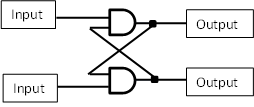
Binary Translation in Dynamic RAM
Dynamic RAM uses capacitors in its binary interpretation. In understanding the method used for DRAM, we must remember that capacitors can be charged or discharged. Capacitors allow charge to build up on their conducting surfaces as current flows to them. Eventually, the capacitor reaches its limit, and the current stops, but the capacitor holds that charge in it. For DRAM, a charged capacitor represents the binary digit ‘one’, and an empty capacitor represents the binary digit ‘zero’. (Carns, Zheng, & Wang, 1999) DRAM is considered dynamic because the capacitors quickly lose their charge through a natural leaking process. If they are allowed to lose their charge, then the binary digit they should be representing would be incorrect. To prevent this, there is a refreshing pulse that refills the capacitors that should be filled. This leaking and subsequent refreshing happens at a rate of a thousand times a second. (Tyson & Coustan, 2000) As we can see, DRAM uses less components in its process, but at the same time, the constant refreshing does require extra work. Both SRAM and DRAM have their pros and cons.
Other Components
In both types of RAM, these memory cells are arranged in a grid that require other components to access and change the state of each specific cell. These components are essential for the type of random access that these memories are used for. The addressing components consist of buffers, column and row decoders, read/write operators, and sense amplifiers. (Carns, Zheng, & Wang, 1999)
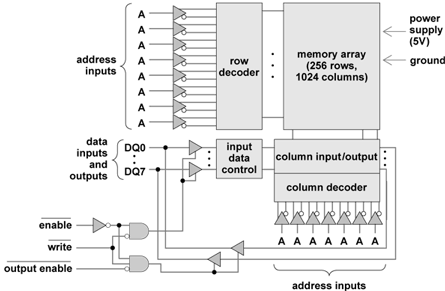
Buffers
The buffers are the first components to receive information about accessing the memory, and the last components before sending that information back out. They serve as the middle men and help facilitate the way information is received and then given back to the rest of the computer circuitry.
Decoders
Column and row decoders are the components involved in accessing specific cells. This is obviously needed when you consider the size of each memory chip and importance of being able to select only specific cells out of millions. The decoders work by highlighting each cell and making them available. The cells are arranged in a grid with lines running up and down, making columns called bit lines, and lines running across, making rows called word lines. The row decoder works first by triggering a transistor that opens the entire row. Then, the bit lines for each cell that is being requested are activated through the column decoder. The decoders receive input in the form of binary numbers that correspond to the address of that cells that are being requested. This is much like the addresses for our homes, but using only binary digits. Each cell has a unique binary number associated to it.
Read/Write Operator
The cells are then accessed by the “read/write operator” through the bit lines. How the bit lines are used depends on whether the cell is being read or written to. There are two bit lines for each cell, one on each side. To read a cell, the voltage of the cell is interpreted by measuring the potential difference between these two bit lines, using the sense amplifier. To write to a cell, the operator uses inverters and connects a bit line to the ground or connects a bit line to the power source. The other bit line stays neutral, which is what causes a difference in potential. In the case of SRAM, connecting the bit line to the ground causes the voltage to go low and connecting a bit line to the power source causes the voltage to go high. In the case of DRAM, connecting to the ground causes the charges to leave the capacitor and connecting to the power source causes charges to build up on the capacitor.
Conclusion
The process of addressing and reading or writing happens within a matter of nanoseconds. This means the computer can quickly access the memory thousands of times a second which makes this form of memory vital to any type of computer. It is not, however, the only needed type of memory. In fact, this memory is not useful for storing over long periods of time, especially if the computer were to be turned off. While SRAM is said to be static, both SRAM and DRAM are volatile memories because they need a constant DC power source to maintain their states. If the power source is disconnected, the charges leave and the potentials drop to zero, erasing the information stored in all the cells. This is why the hard drive serves its special function of holding information even when the power is gone.
Works Cited
Carns, T. K., Zheng, X., & Wang, K. L. (1999). SRAM CHIPS. Encyclopedia of Electrical & Electronics Engineering, Vol. 20, p322-341, 20p. Retrieved April 2012
Frenzel, L. (2010). Electronics Explained. Newnes.
Informa UK Ltd. (2004). RAM and ROM memories. Future Mobile Handsets.
Oshima, Y., Sheu, B. J., & Jen, S. H. (1999). DRAM CHIPS. Encyclopedia of Electrical & Electronics Engineering, Vol. 6(1st Edition), p58-68, 11p. Retrieved April 2012
Pierce, R. (2012, Jan 8 ). Binary Digits. Retrieved April 24, 2012, from Math Is Fun: http://www.mathsisfun.com/binary-digits.html
Tyson, J., & Coustan, D. (2000, August 25). How RAM Works. Retrieved April 2012, 22, from HowStuffWorks: http://computer.howstuffworks.com/ram.htm

